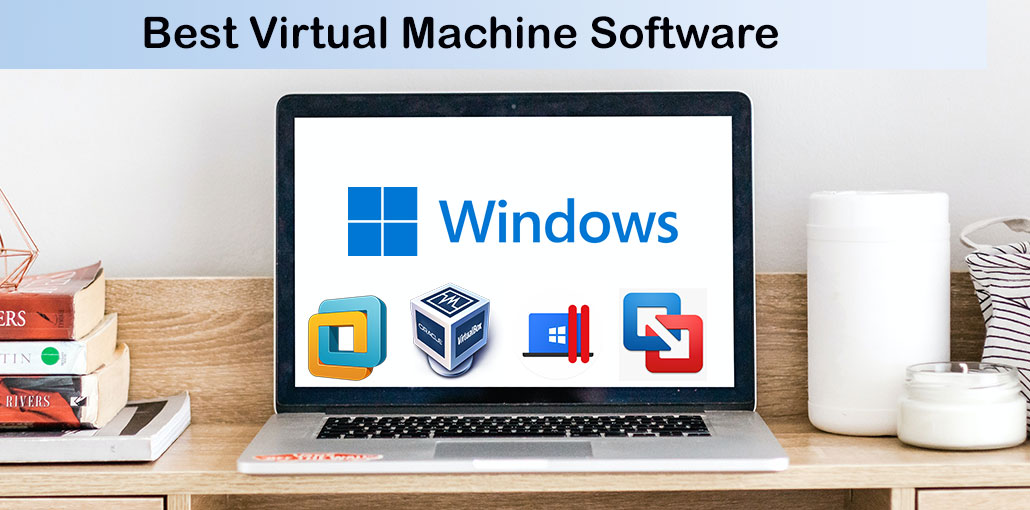Virtualization Software: Unleashing the Power of Virtual Machines
Introduction
Virtualization software has revolutionized the world of computing by enabling multiple virtual machines (VMs) to run on a single physical machine. This technology has transformed data centers, streamlined software development, and facilitated efficient testing and deployment processes. In this comprehensive article, we will delve into the intricacies of virtualization software, its different types, benefits, challenges, and its impact on various industries.
Understanding Virtualization Software
Virtualization software, also known as a hypervisor, creates a virtual layer between the hardware and the operating system, allowing multiple VMs to coexist on a single physical server. Each VM operates independently, emulating a complete computer system with its own CPU, memory, storage, and network resources. The hypervisor manages these VMs, ensuring they have adequate resources and remain isolated from each other.
Types of Virtualization Software
a. Type 1 Hypervisor (Bare-metal): This type runs directly on the physical hardware, without the need for an underlying operating system. Examples include VMware ESXi, Microsoft Hyper-V Server, and KVM (Kernel-based Virtual Machine).
b. Type 2 Hypervisor (Hosted): Installed on top of an existing operating system, this type allows users to run VMs as applications. Popular examples include VMware Workstation, Oracle VirtualBox, and Microsoft Hyper-V (on Windows client OS).
Benefits of Virtualization Software
a. Server Consolidation: Virtualization enables multiple VMs to run on a single physical server, optimizing resource utilization and reducing hardware costs.
b. Resource Isolation: Each VM operates independently, ensuring that a failure in one VM does not affect others, enhancing system stability and security.
c. Cost Savings: By consolidating servers, businesses can reduce power consumption, cooling requirements, and physical space, resulting in cost savings.
d. Improved Disaster Recovery: Virtualization allows for easy replication and migration of VMs, simplifying disaster recovery and business continuity planning.
e. Simplified Software Development and Testing: Virtual environments provide a safe and isolated space to test software without affecting the production environment.
f. Agile Deployment: VMs can be quickly provisioned, cloned, and scaled to meet changing workload demands, facilitating flexible and agile deployment.
The Impact on Data Centers and Cloud Computing
Virtualization has revolutionized data centers, enabling efficient resource allocation, scalability, and automation. The technology forms the foundation of cloud computing, allowing cloud service providers to offer virtualized resources to clients, leading to the proliferation of Infrastructure as a Service (IaaS) and Platform as a Service (PaaS) models.
Challenges and Security Considerations
a. Performance Overhead: Running multiple VMs on a single server can introduce performance overhead, especially when VMs compete for resources.
b. VM Sprawl: Without proper management, the ease of creating VMs can lead to uncontrolled proliferation, resulting in VM sprawl and increased complexity.
c. Security Risks: Vulnerabilities in the virtualization layer or misconfigured VMs can lead to security breaches and data exposure.
d. Licensing Complexity: Virtualization can introduce licensing challenges, as licensing requirements vary for different software running on VMs.
Virtualization in the Enterprise
In the corporate world, virtualization has become integral to modern IT infrastructure. Many organizations use virtualization for server consolidation, running multiple applications on the same hardware, and facilitating remote access for employees.
Virtual Desktop Infrastructure (VDI)
VDI leverages virtualization to deliver desktop environments to end-users via thin clients or remote devices. It centralizes desktop management, enhances security, and simplifies software updates and patching.
Virtualization in Software Development and Testing
Virtual environments are widely used in software development and testing to provide isolated sandboxes for developers and testers to work in. This reduces the risk of conflicts and enables quick testing in various configurations.
The Future of Virtualization Software
As technology advances, virtualization software is likely to evolve further. Advancements in hardware virtualization support, security measures, and integration with emerging technologies like containers and edge computing will shape the future of virtualization.
Conclusion
Virtualization software has transformed the way we utilize computing resources, enabling greater efficiency, scalability, and cost savings. From data centers to software development, virtualization has made a significant impact on various industries. While challenges like performance overhead and security concerns persist, ongoing advancements and innovations will continue to refine virtualization technology, unlocking new opportunities and further enhancing its role in the digital landscape.





